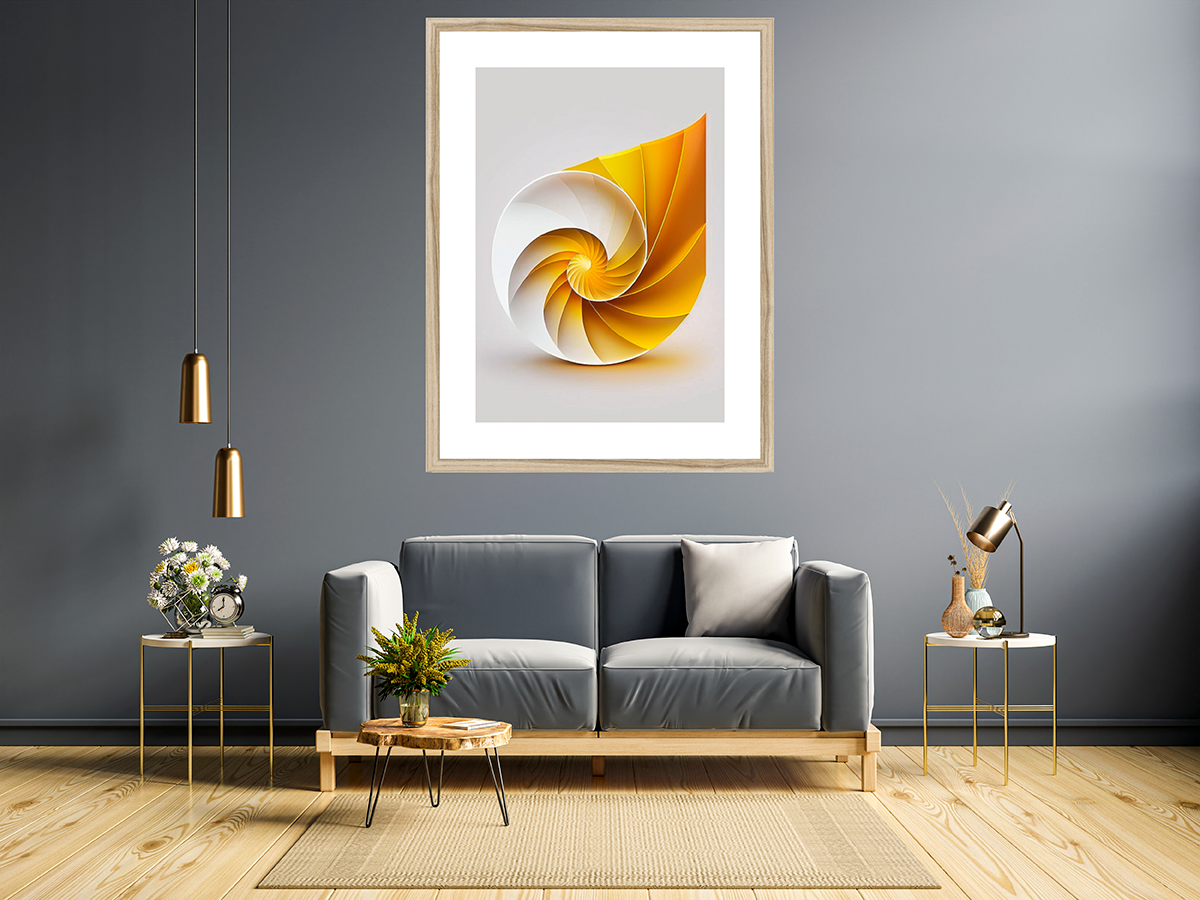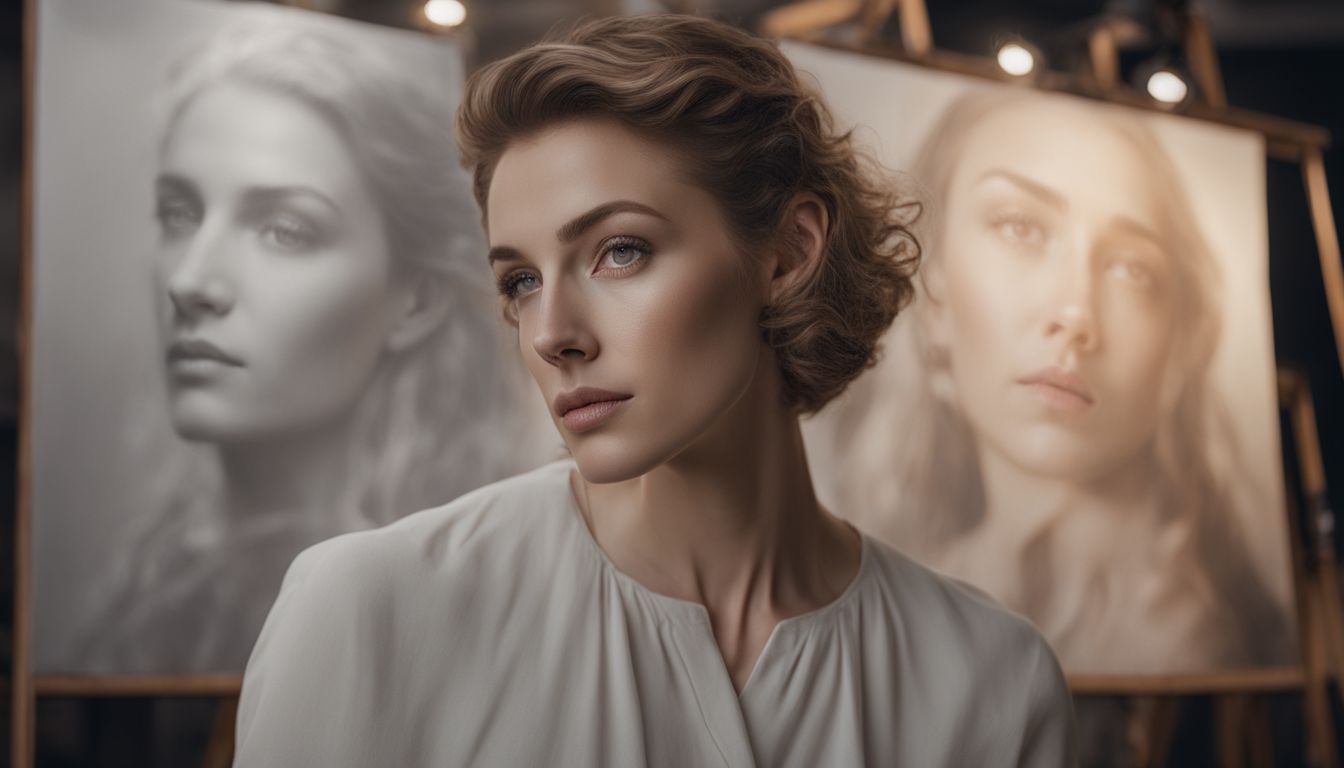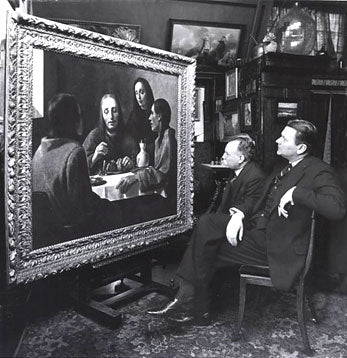Van Gogh, Mozart, and Machines: The Harmonic Convergence of Art and AI
Would you like to play a little thought experiment?
Yes? OK let's go...
What if Van Gogh and Mozart were early prototype AIs and not the great tragic geniuses of our imagination?
I don't mean they were cyborgs programmed by Skynet and sent from the future with the sole mission of producing hauntingly beautiful paintings and composing melodic masterpieces instead of trying to eliminate Sarah Connor (The Terminator, 1984) to prevent the birth of John Conor.
Instead I mean the idea that the parallels to be drawn between their ingenious minds and the sophistication of advanced Artificial Intelligence demonstrate that exceptional human creativity may share a certain similarity with artificial systems.
And this similarity is a flair for representing mathematical patterns to us as aesthetic beauty.
So what does mathematics have to do with art and beauty?
When was the last time you stopped to smell the roses? And when you did, did you notice it had 5 petals? Or that any flower you look at will always have 3, 5, 8, 13 or 21 petals?
There is in fact a pattern to these numbers and it is called the Fibonacci sequence (1,1,2,3,5,8,13,21,34,55...)
These sequence of numbers are named after the Italian mathematician Leonardo of Pisa, also known as Fibonacci, who introduced the sequence to Western European mathematics in his 1202 book Liber Abaci.
In fact the numbers were first metioned by Acharya Pingala, an Indian poet and mathematical in a Sanskrit prosody text called the Chandaḥśāstra, were he describes a sequence of poetic meters.
This meter sequence follows a pattern where each subsequent meter is defined by adding the previous two meters together.
Pingala did not himself extend the pattern to higher terms as he was focused just on categorizing poetic meters.
However, it was Pingala's foundational work, describing each meter as the sum of the two preceding it, that paved the way for the emergence of the Fibonacci sequence.
This sequence was later named after Fibonacci, who introduced it to the West and expanded upon it in his seminal work, Liber Abaci.
So simply put, the Fibonacci sequence is a set of integers (the Fibonacci numbers) that starts with a zero, followed by a one, then by another one, and then by a series of steadily increasing numbers. The sequence follows the rule that each number is equal to the sum of the preceding two numbers (0, 1, 1, 2, 3, 5, 8, 13, 21, 34, 55, 89, 144, 233 ...)
Fibonacci numbers are of particular interest to biologists and physicists because they are frequently observed in various natural objects and phenomena. The branching patterns in trees and leaves, for example, and the distribution of seeds in a raspberry reflect the Fibonacci sequence.
For example in physics, when high energy particles collide, the debris fragments that emerge follow Fibonacci number ratios. For instance, a particle may decay into 13 smaller pieces or fragmentation clusters may occur in 34 or 55 patterns. This demonstrates the sequence's presence in quantum interactions.
But it doesn't stop there, in addition to the number sequence themselves, you also find the same ration between Fibonacci numbers appearing.
So for example when you divide a Fibonacci number by the one before it in the sequence, particularly the larger numbers, you always get more or less the same number:
| n | Fibonacci Number | Ratio | Approximation of φ |
|---|---|---|---|
| 1 | 1 | - | - |
| 2 | 1 | 1/1 = 1 | - |
| 3 | 2 | 2/1 = 2 | - |
| 4 | 3 | 3/2 = 1.5 | - |
| 5 | 5 | 5/3 = 1.666... | - |
| 6 | 8 | 8/5 = 1.60 | - |
| 7 | 13 | 13/8 = 1.625 | 1.625 |
| 8 | 21 | 21/13 = 1.615 | 1.615 |
| 9 | 34 | 34/21 = 1.619 | 1.619 |
| 10 | 55 | 55/34 = 1.617 | 1.617 |
| 11 | 89 | 89/55 = 1.618 | 1.618 |
| 12 | 144 | 144/89 = 1.618 | 1.618 |
| 13 | 233 | 233/144 = 1.619 | 1.619 |
| 14 | 377 | 377/233 = 1.617 | 1.617 |
| 15 | 610 | 610/377 = 1.618 | 1.618 |
| 16 | 987 | 987/610 = 1.619 | 1.619 |
| 17 | 1,597 | 1,597/987 = 1.617 | 1.617 |
| 18 | 2,584 | 2,584/1,597 = 1.618 | 1.618 |
| 19 | 4,181 | 4,181/2,584 = 1.617 | 1.617 |
| 20 | 6,765 | 6,765/4,181 = 1.618 | 1.618 |
| 21 | 10,946 | 10,946/6,765 = 1.618 | 1.618 |
| 22 | 17,711 | 17,711/10,946 = 1.619 | 1.619 |
| 23 | 28,657 | 28,657/17,711 = 1.618 | 1.618 |
| 24 | 46,368 | 46,368/28,657 = 1.617 | 1.617 |
| 25 | 75,025 | 75,025/46,368 = 1.618 | 1.618 |
| 26 | 121,393 | 121,393/75,025 = 1.619 | 1.619 |
| 27 | 196,418 | 196,418/121,393 = 1.617 | 1.617 |
| 28 | 317,811 | 317,811/196,418 = 1.618 | 1.618 |
| 29 | 514,229 | 514,229/317,811 = 1.618 | 1.618 |
| 30 | 832,040 | 832,040/514,229 = 1.617 | 1.617 |
This number is called the Golden Ratio 

AI Art based on the Golden Ratio
Our old friends, the Greeks of the ancient world were the first to discover the Golden Ratio number which they called 'Phi' and used the concept in different ways including for art.
For example the Golden Ratio was supposed to have been used by the ancient Greek sculptor Phidias to illustrate the idea of physical perfection.
The most well-known example is his statue of Zeus at Olympia, one of the Seven Wonders of the Ancient World. According to some historical sources, Phidias consciously incorporated the golden ratio in designing this massive chryselephantine (gold and ivory) sculpture of the seated Zeus.
The dimensions of the statue, from Zeus' head to his feet versus across his limbs lying on the throne, approximated the Golden Ratio. Phidias seemingly crafted the proportions to evoke the mathematical harmony and perfection befitting the king of the gods.
![]()
AI Art reimaging of the Zeus at Olympia sculpture
Other famous examples of the golden ratio appearing in works of art:
- Leonardo da Vinci's Mona Lisa - The dimensions of the painting approximate the golden ratio. Her face and upper body also contain golden ratio proportions.
- Salvador Dalí's The Sacrament of the Last Supper - The canvas dimensions match the golden ratio. The table in the painting is arranged along a golden ratio diagonal.
- The Parthenon - The façade of this ancient Greek temple in Athens has many golden ratio relationships in its architecture.
- Michelangelo's The Creation of Adam on the Sistine Chapel ceiling - God and Adam's outstretched hands are positioned at golden ratio points in the fresco's composition.
- Georges Seurat's A Sunday Afternoon on the Island of La Grande Jatte - The painting incorporates golden spirals and ratios throughout the scene and figures.
- The Great Pyramids of Egypt - The pyramids have height to base side ratios closely approximating the golden ratio.
- Stradivarius violins - The ratio of the instrument body's length to width is very nearly the golden ratio.
- Notre Dame Cathedral - Golden rectangles are found throughout the medieval Gothic cathedral's floor plan and façade.
It would appear, then, that beneath many - perhaps all - works of art that we cherish and find aesthetically pleasing there is an underlining mathematical principle at play.
Therefore could someone or something with a better understanding of mathematical principles produce better art? Are there new forms of art based on mathematical principles waiting to be discovered over the next few years as the AI art revolution speeds up?
"Talent hits a target no one else can hit; Genius hits a target no one else can see." Arthur Schopenhauer
The Potential of AI in Artistic Creation
 Is the soul of a masterpiece found in its creation or its reception?
Is the soul of a masterpiece found in its creation or its reception?
AI has the potential to revolutionize artistic creation, raising questions about the nature of creativity and the role of human artists in an increasingly automated world.
And out of this arises some interesting philosophical questions.
Take for example this famous philosophical thought experiment, "If a tree falls in a forest and no one is around to hear it, does it make a sound?"
Is your answer yes and that sound is purely the result of an event or series of events producing a sound wave regardless of there being someone to receive and process the vibration of the waves?
Or no, there can only be 'sound' if there is a person or animal with the capacity to hear the sound?
Perhaps it comes down to your interpretation of what sound is? Or how your mind imagines the falling tree (i.e. Are you there as some kind of formless consciousness witnessing the tree fall in real time? Or do you imagine it falling in a place separate from you?)
But then what about Light and the fact that there are forms of light, for example Ultraviolet or Infrared, present, but invisible to us, but very visible to animals? Did they not exist until we discovered them?
What about art?
If it makes you feel something is it art? Or does it need to have been handmade by an archetypal artist who intends to make you feel something?
The story of Han van Meegeren
Han van Meegeren, a Dutch artist and forger, is one of the most infamous art forgers of the 20th century. He was born in 1889 and lived through both World Wars.
While he was a talented artist, his own works didn't gain the recognition he sought, leading him to a life of forgery.
Background
Van Meegeren felt undervalued and scorned by the art critics of his time. Out of a mixture of revenge and the desire for acknowledgment, he started creating and selling forgeries of works by revered Dutch artists, most notably Johannes Vermeer.

Girl with a Pearl Earring (1665) by Johannes Vermeer
Process
Van Meegeren was meticulous in his forgery process. He studied the techniques and styles of the Old Masters intensively. To make his forgeries convincing, he would:
- Use old canvases to give the paintings an authentic feel.
- Mix his own paints, often incorporating Bakelite (a type of plastic) to harden the paintings and make them appear older.
- Bake the finished works to further age them.
The Emmaus Forgery
One of his most renowned forgeries is "The Supper at Emmaus," which he claimed to be a lost masterpiece by Vermeer. He went to great lengths to convince art critics, historians, and buyers that it was genuine, and succeeded for a time. This painting was acclaimed as a masterpiece and authenticated by the leading art experts at the time.
Exposure
Van Meegeren’s secret came to light under dramatic circumstances. After WWII, he was accused of selling Dutch cultural property to the Nazis (a crime of collaboration), because a Vermeer (his forgery) ended up in the hands of Hermann Göring, a prominent Nazi figure.
Facing the death penalty for treason, Van Meegeren confessed to the forgeries. To prove his innocence, he painted another "Vermeer" while in custody. The revelation shook the art world. The esteemed critics who had praised his work were embarrassed, and the legal system was left in a quandary.
Trial and Aftermath
Van Meegeren was tried for fraud and forgery, rather than treason. He was sentenced to a year in prison in 1947 but died of a heart attack before serving his sentence.
The exposure of Van Meegeren’s forgeries prompted a reevaluation of authentication methods in the art world. His life and crimes highlighted the challenges of determining art authenticity and the role of expert judgment, instigating a more systematic and scientific approach to the verification of artwork.

Director and chief restorer of Museum Boymans in Rotterdam admiring the newly discovered Emmaus by Johannes Vermeer that eight years later would be unmasked as a fake made by Han van Meegeren.
What does this tell us the nature of Art?
What Han Van Meegeren did was wrong and immoral, however it does highlight an interest point.
Before his works were discovered to be forgeries, art critics, art historians, art dealers and art collectors had loved and admired his creations.
You can imagine them with a champagne flute in one hand and their chin in the other, stood in front of the artwork extoling its virtues and being moved by its brushstrokes, the mesmerizing play of light and shadow, and the profound emotions it evoked.
They would have woven intricate narratives about the artist’s intentions, drawing connections between the piece and the larger tapestry of art history and then it was discovered to have been painted by a man called Van Meegeren instead of a man called Vermeer.
So does this mean that everything they thought and felt about the artwork was 'unreal'? Was it all a dream like 'Who shot JR'?
There are always 3 truths, Your truth, Their truth and the Real truth.
In "An Instance of the Fingerpost" a historical mystery novel set in 1660s Oxford by Iain Pears, the story unfolds through four different perspectives, each offering a distinct, often contradictory, account of a series of events involving a murder.
As the narrators unveil their versions of the truth, the reader is immersed in a complex narrative of deception, intrigue, and mystery, highlighting the elusive nature of truth and the intricacies of human perception and memory.
Each narrator presents their own version of events - their own "truth" - influenced by their perceptions, biases, and agendas. Readers are compelled to sift through these conflicting narratives to discern the underlying reality.
But ultimately the objective reality or "the real truth" remains elusive, echoing the idea that when it comes to our subjective perceptions there are multiple versions of the truth outside the physical reality of cause and effect.
The love of Art is subjective
Perhaps ultimately it comes down to the story we tell ourselves about the artwork.
That story can either about about the artist, what they are trying to tell us about our world and how they made the artwork or it can be the story we tell ourselves about the artist and our world inspired by the artwork or both?
There is no wrong answer and that's the beauty of Art, there can be more than one answer, 2 + 2 doesn't have to equal 4 in art, it can be 0, 1, 1, 2, 3, 5, 8, 13, 21, 34, 55, 89, 144...
So, were Van Gogh and Mozart an early prototype AI?
To quote Shakespeare " What's in a name? That which we call a rose
By any other name would smell as sweet"
Perhaps the better question is, Does it matter? Their work touches us and makes us feel something and ultimately this is Art.
![]()